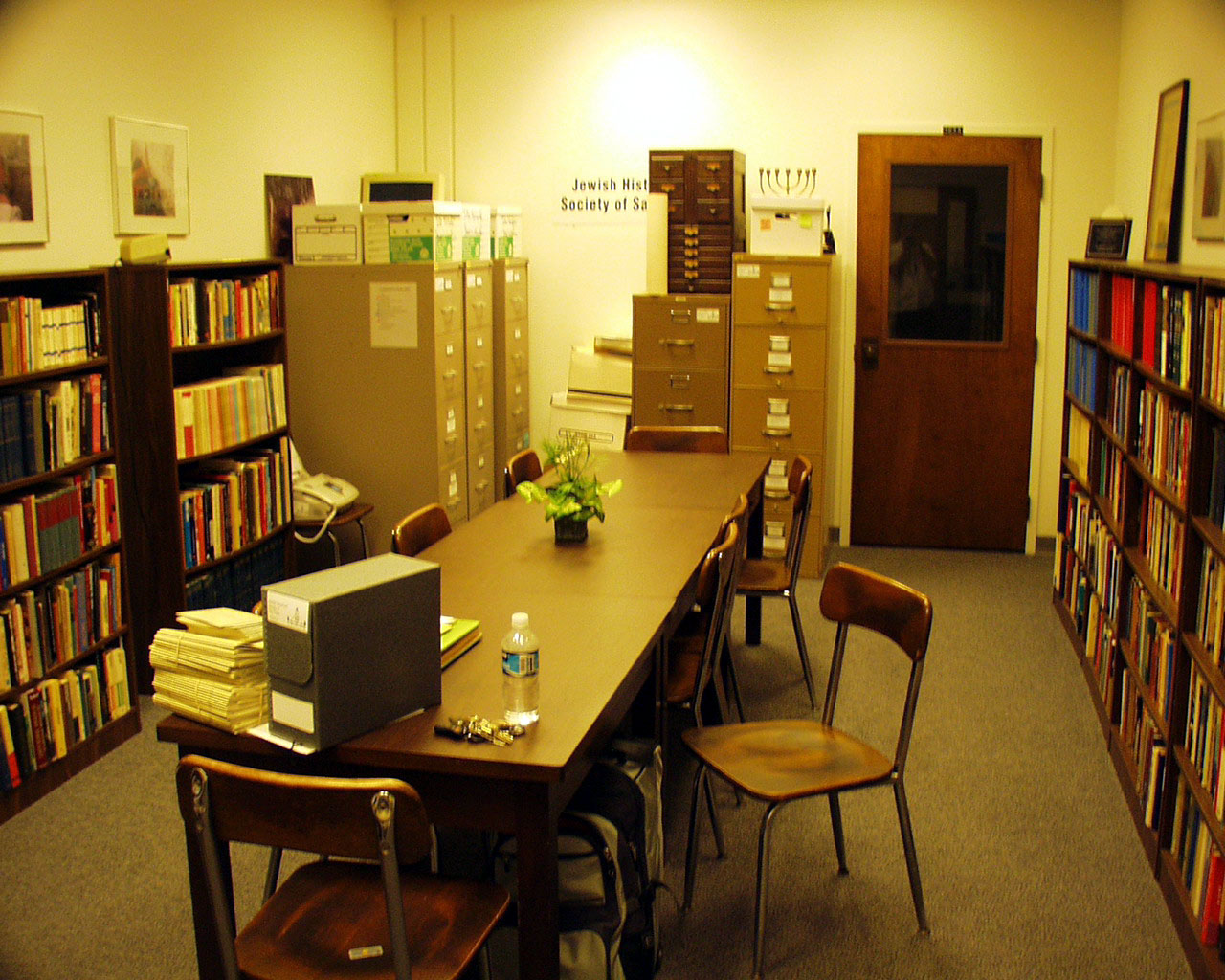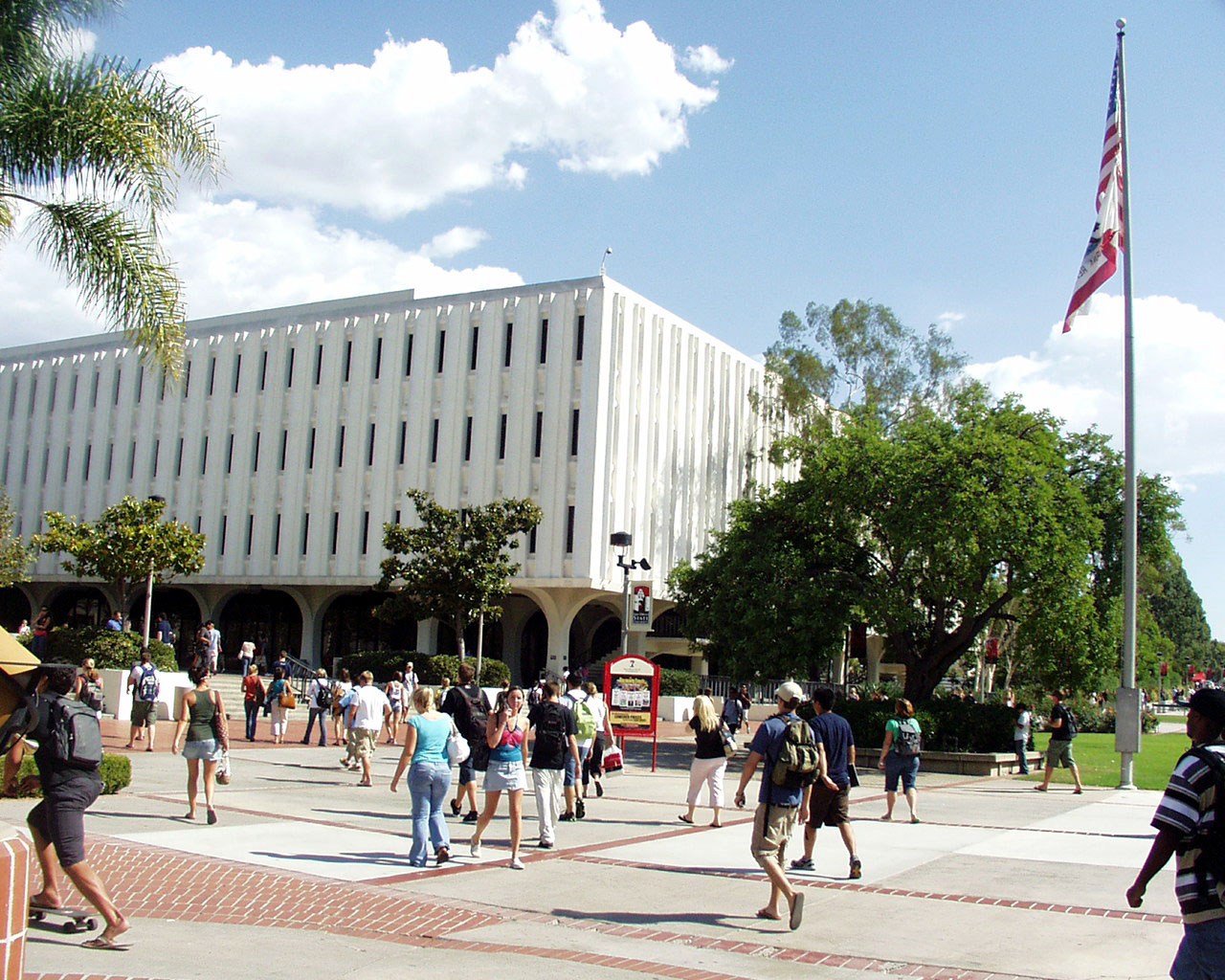By Donald H. Harrison
SAN DIEGO—The on-campus Love Library is named for former San Diego State
University President Malcolm Love, and not for the emotion that so motivates
men and women. But had it been otherwise, then the Snyder Judaic Studies
Reading Room on the library's third floor would still very much belong, for it
celebrates a widower's undying affection and regard for the companion of his
years.
 Back
in 1987, when the amount seemed prodigious, real estate developer Irving J.
Snyder donated $50,000 to establish the reading room in his wife Sylvia's
memory and to provide funds to SDSU's Lipinsky Institute for Judaic Studies
for special purchases. Ironically, the name of the reading room has outlasted
the name of the Institute it was intended to enhance.
Back
in 1987, when the amount seemed prodigious, real estate developer Irving J.
Snyder donated $50,000 to establish the reading room in his wife Sylvia's
memory and to provide funds to SDSU's Lipinsky Institute for Judaic Studies
for special purchases. Ironically, the name of the reading room has outlasted
the name of the Institute it was intended to enhance.
I've seen the process unfold again and again in the Jewish community in which
philanthropists have a building, or a sanctuary, or a room named for them or
for a loved one, only to have that name become all but obliterated by the
march of progress. Donors may think that their names or those of their loved
ones will be preserved long after they have gone to the graves, but changing
demographics and economic realities often militate against these hopes.
Instead of for eternity, loved ones sometimes are memorialized for only a
generation or two.
There are numerous synagogues and Jewish agencies in San Diego that have
changed locations over the years. Names that graced rooms in the previous
buildings can't be carried over to the new buildings because new
sets of donors must be courted and rewarded It probably has always been
thus that the needs of the present generation outweigh the demands of the
past.
In some cases, institutions save the old plaques, and even re-hang them on a
memorial wall, in an attempt to continue honoring the memory of the generous
donors of the past. But in other cases the institutions don't even do
that. Except in photographs, or in old newspaper clippings, or minute
books, the record of previous donations—and their donors—soon fade from
memory. Remember Percy Bysshe Shelley's poem about Ozymandias?
The story about how the name of the Lipinsky Institute for Judaic Studies may
someday completely fade from memory is based in the reality of fundraising
economics. When Dorris and Bernard Lipinsky donated $250,000 in 1985 for
the institute's establishment, it was thought that by banking that money as an
endowment fund, there would be a continual source of funds for the institute's
programming.
However, over the next two decades, the amount of interest one could receive
from a quarter of a million dollars purchased less and less. Augmenting
the endowment fund proved difficult because with the Lipinsky name on the
Institute, other potential donors assumed that their own money was more
urgently needed elsewhere.
Under History Prof. Lawrence
Baron, who took over the Lipinsky Institute in
1988, there had been a busy schedule of on-campus and off-campus
activities. On-campus, the Lipinsky Institute coordinated the Jewish
Studies Program, which brought a visiting Israeli professor to SDSU each
year. It also offered a variety of courses which ambitious students
could parlay into an academic major by augmenting them with some Jewish
Studies courses offered via teleconferencing by other California State
Colleges.
Off campus, the Lipinsky Institute sponsored a variety of colloquia,
symposia, and an array of speakers who would give lectures to both civic and
Jewish organizations. Baron, himself, delivered numerous lectures
throughout the Jewish community in conjunction with Jewish film
festivals.
University officials met with the heirs of Dorris and Bernard Lipinsky—their
children Elaine and Jeffrey Lipinsky —and persuaded them that one of their
parents' favorite causes, San Diego State University, would be better off if
the Institute's programs and name were revamped. Given that the clock
tower near the Student Activities Center already is named for the Lipinskys,
and that Bernard was one of the few people ever to receive an honorary
doctorate from SDSU, it's fair to say that there is a real love affair between
the Lipinsky family and the university. The children generously acceded
to SDSU's wishes.
Baron decided to move onto other projects once the transiton were made
So after nearly 18 years as director of the Jewish Studies program--a chai lifetime—he
was succeeded in that position by Religious Studies Prof. Risa Levitt
Kohn. In turn he took up new responsibilities as the academic
advisor to graduate students in the History Department. I'm one of the
new graduate students he is now advising.
In addition to her SDSU responsibilities, Levitt Kohn has been very busy of
late—and is likely to continue to be for some time—as the local curator
for the blockbuster Dead Sea Scrolls exhibition that will be coming to the San
Diego Natural History Museum in Balboa Park next July through December.
 Meanwhile,
the Snyder Judaic Studies Reading Room on the Third Floor of the Love Library
is getting quite crowded. Not only does it house a collection of books that
are of interest to students in the Jewish Studies program, it also is the home
of the archives of the Jewish Historical Society of San Diego. This group has
been collecting scrapbooks, papers, awards, plaques and other memorabilia of
historic interest to San Diego's Jewish community and making these
research treasure troves available to students and to other researchers.
But success breeds its own problems: eventually there simply won't be enough
space in the reading room to house both collections.
Meanwhile,
the Snyder Judaic Studies Reading Room on the Third Floor of the Love Library
is getting quite crowded. Not only does it house a collection of books that
are of interest to students in the Jewish Studies program, it also is the home
of the archives of the Jewish Historical Society of San Diego. This group has
been collecting scrapbooks, papers, awards, plaques and other memorabilia of
historic interest to San Diego's Jewish community and making these
research treasure troves available to students and to other researchers.
But success breeds its own problems: eventually there simply won't be enough
space in the reading room to house both collections.
It may be some time before all this is sorted out, but eventually the question
will be answered, "Is it time to move the Snyder Judaic Studies Reading
Room to bigger quarters?"
And then, there may be such other questions as "How should a new
facility be paid for?" "Would a philanthropist be willing to
donate if we named the new quarters after him or her?"
In the meantime, the Snyder Judaic Studies Reading Room remains in the Love
Library for all to enjoy. Books such as those that line the shelves had a
special meaning to Irving Snyder. Having immigrated to the United States
at age 19 from Russia, and having immediately taken a job in his adopted
country, he did not have the opportunity for a formal education. But
whenever he could, he read, and read. "The only education I got was
through reading," he recalled back a few months before his death in 1988.
For nearly two decades
now, anyone who wanted to could do the same in the reading room which recalls
the memory of his beloved Sylvia.
What about his legacy? Whatever becomes of the reading room, Snyder had
the pleasure of knowing during his lifetime that his record of good deeds for
the Jewish community would be carried on by his daughter, Jodyne
Roseman.
He had the opportunity to kvell when she became the president of
the Jewish Campus Centers (Hillel) organization which served both UCSD and
SDSU. In the last year of his life, he proudly watched as she became
president of the regional chapter of the Anti-Defamation League.


